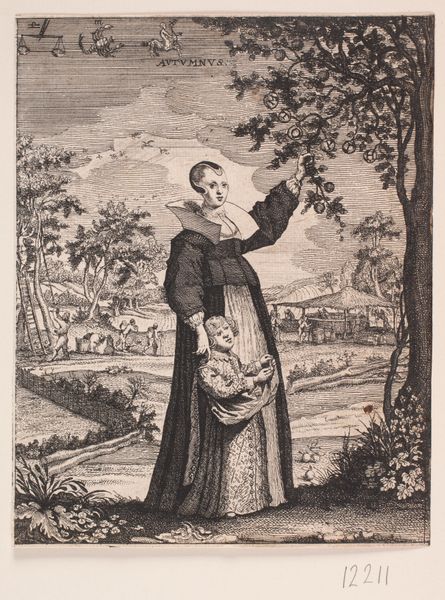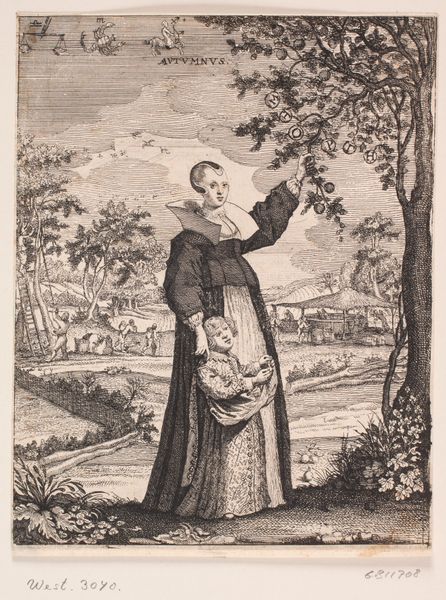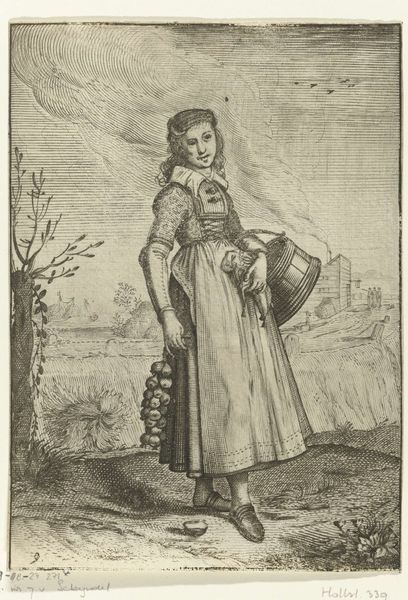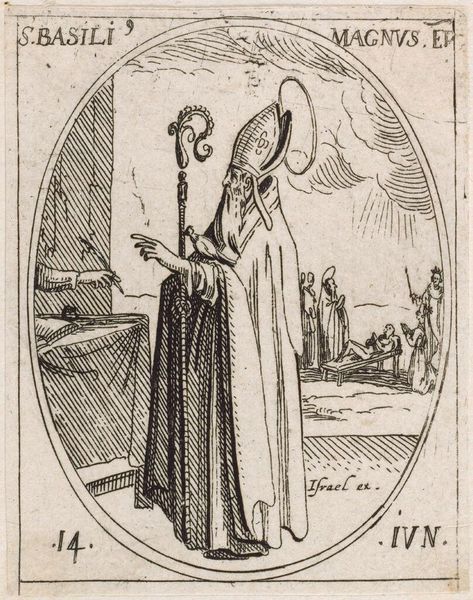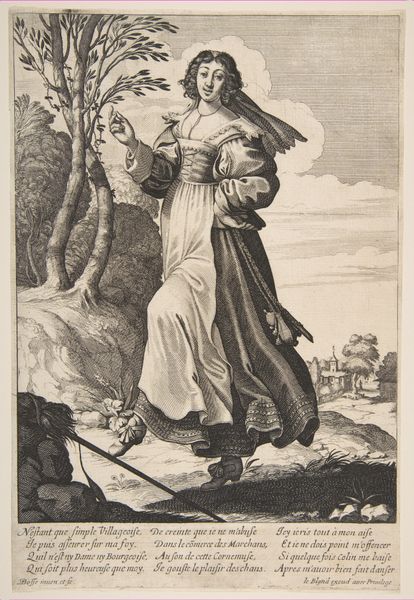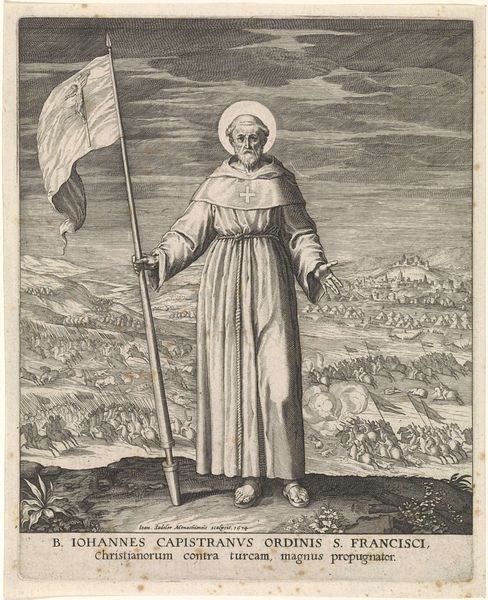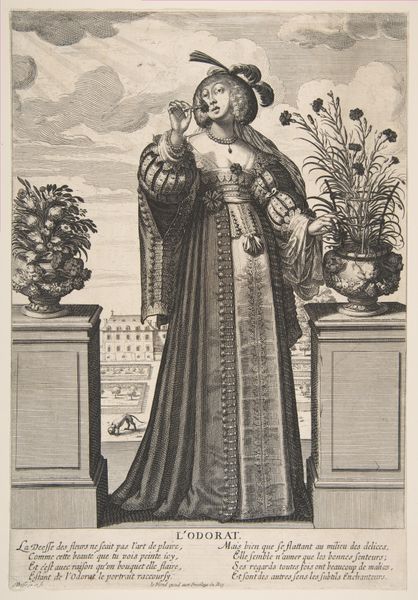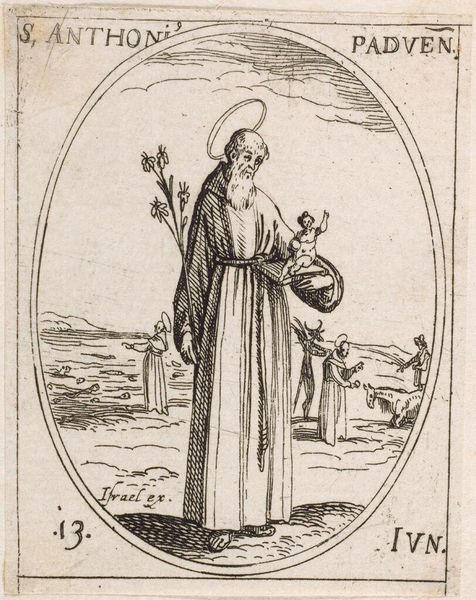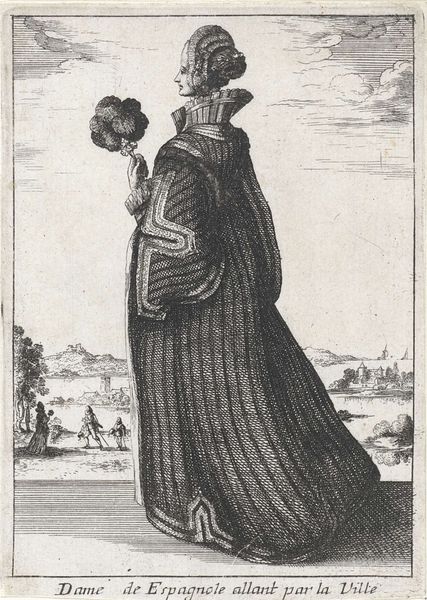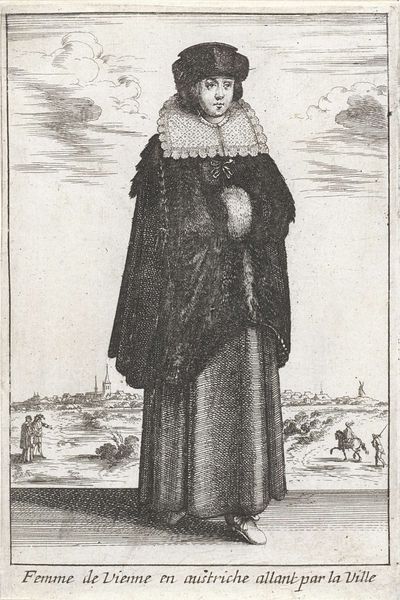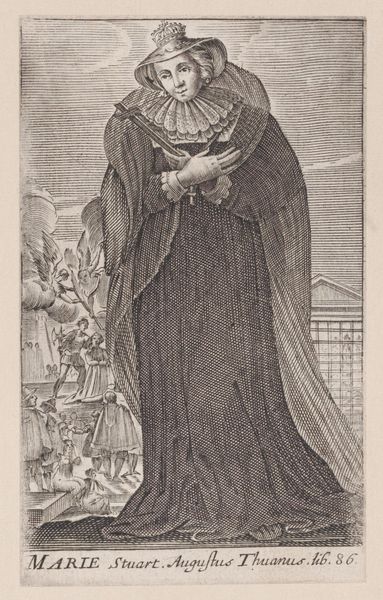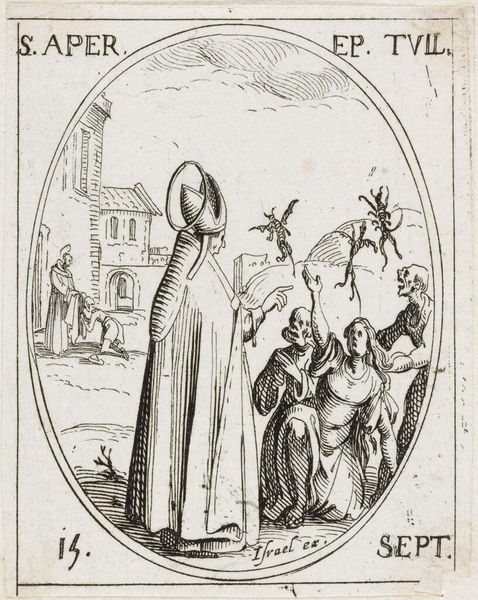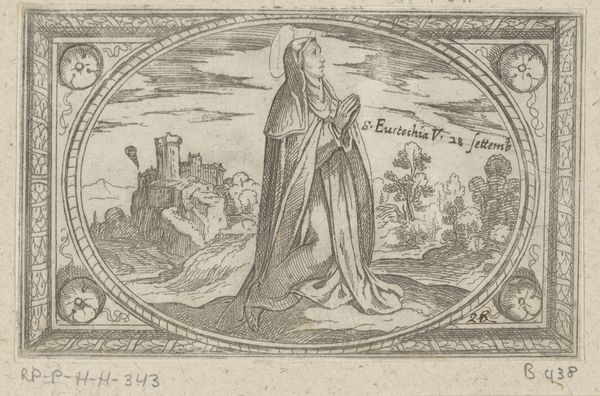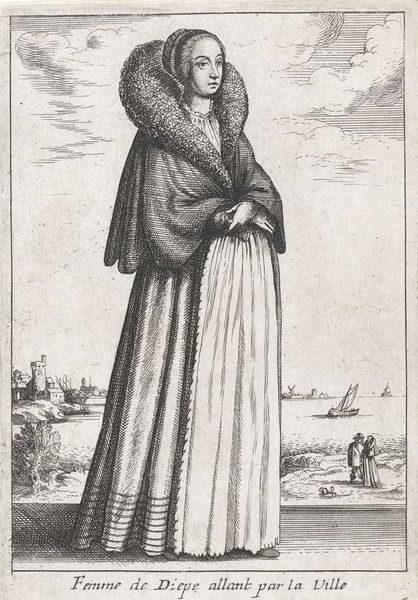
print, engraving
#
portrait
#
baroque
# print
#
landscape
#
genre-painting
#
engraving
Dimensions: 176 mm (height) x 138 mm (width) (bladmaal)
Curator: This is Albert Haelwegh’s "Sommeren," an engraving created in 1648, here at the SMK. What catches your eye first? Editor: It’s undeniably the contrast. The formal, almost rigid figure of the woman is juxtaposed against this bustling, pastoral scene, brimming with labor and life. Curator: Indeed. Note how Haelwegh balances portraiture, genre painting, and landscape—all unified through meticulous cross-hatching. The central figure's attire, the stiff ruff, directs the viewer’s gaze toward her face and the composition's formal elements. Editor: But the engraving medium itself speaks volumes. Consider the skilled labor involved in creating this print. Each line etched by hand. It's a fascinating blend: the representation of labor within the image, against the labour of the printing itself. I am particularly drawn to the laborers reaping what appears to be a bountiful harvest in the background. It’s suggestive of an agricultural process deeply rooted in the community. Curator: I find the allegorical symbols particularly engaging. Above the central figure, astrological signs are placed that represent Cancer and Leo. "Aestas" means "summer" in Latin, solidifying the intent. Also note that she holds bundle of wheat. These elements serve as clear semiotic markers, encapsulating the season. Editor: Symbols also include that abundance of apples in the bottom left. Apples also speak of hard labour: Picking and storing and consuming, it makes you aware of production as much as consumption. Curator: One might argue her detached posture is deliberate. It establishes a clear distinction between the noble subject and the peasant activities she oversees. The formal design enhances her separation from the laborers depicted in the background. Editor: Precisely! The material reality is a layered one: production and leisure existing side-by-side, forever captured on the same piece of paper. It also raises questions regarding the lives of the working class and wealthy women of the time, if only through allegory. Curator: Haelwegh certainly offers a detailed yet divided portrayal, doesn’t he? There are different meanings layered into every choice. Editor: Indeed. There's something about the process, in relation to this division of class that continues to engage me here, which ultimately colours how I interpret what's happening in this detailed snapshot.
Comments
No comments
Be the first to comment and join the conversation on the ultimate creative platform.
